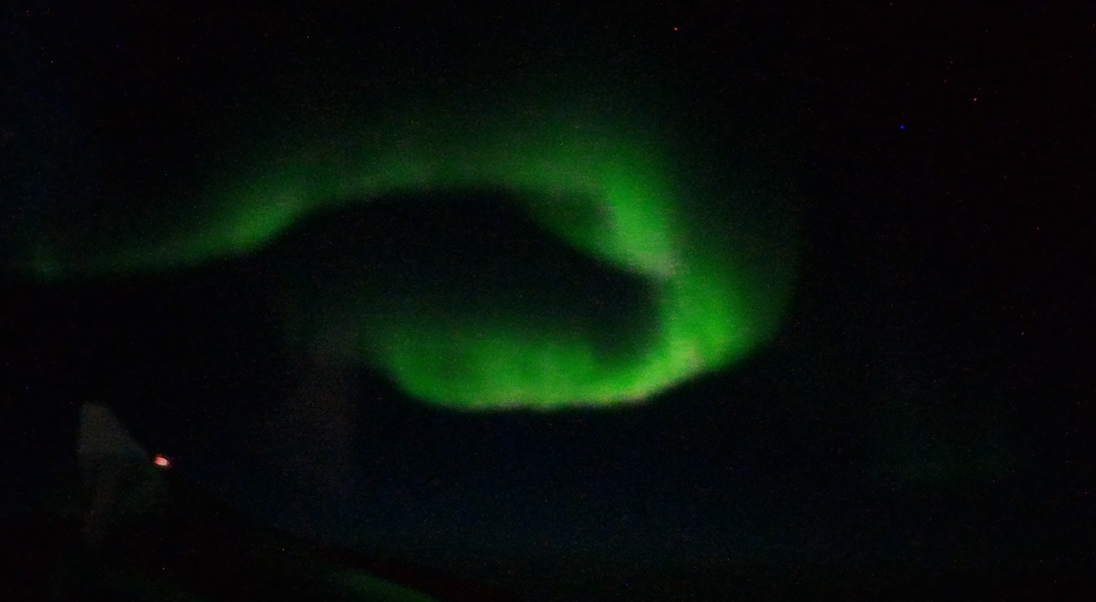BACKGROUND
Auroras are collections of light emitted by collisions between particles falling from outer space and the atoms and molecules that make up the upper atmosphere, which are energized by the collisions. The color of the aurora is determined by the type and energy level of the atoms and molecules. Electrons entering from space lose energy through collisions with atoms and molecules that make up the upper atmosphere, and are eventually assimilated into the surrounding environment. Electrons with high initial energy can therefore enter the lower layers of the atmosphere, where the atmospheric density is higher. The factors that determine the color of the aurora are atmospheric composition, density, and the energy of the incoming particles. For example, the brightest green aurora is the light of forbidden lines at a wavelength of 557.7 nm emitted by oxygen atoms excited by incoming electrons (Figure).
The first spectroscopic observation of an aurora was made by Angstrom in 1869. Modern auroral spectroscopy began around 1950 with Meynell's spectrograph, a 20x20 cm, 600 lines/mm2 grating connected to a Schmidt camera to image the wavelength range from 400 nm to 800-900 nm. Quantitative observations are then carried out with a spectrometer. These usually allow one-dimensional spatial distributions to be observed along with spectra. Since the 1960s, observations have been made using interferometric bandpass filters to extract photons in the wavelength range of interest and obtain a two-dimensional image.

Currently, simultaneous multi-wavelength observations using multiple cameras equipped with interferometric bandpass filters having different center wavelengths are the mainstream of auroral observations. Simultaneous observations at multiple wavelengths have led to an estimation of the energy of the descending electrons and a discussion of the magnetospheric structure and electron scattering/acceleration mechanisms that cause the appearance of auroras. However, information at wavelengths other than those selected has not been obtained, and the full mechanism of auroral development has not yet been elucidated.
